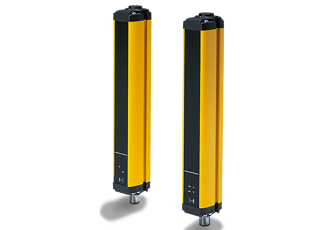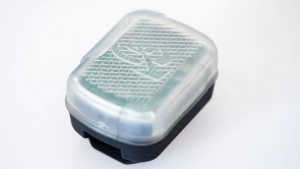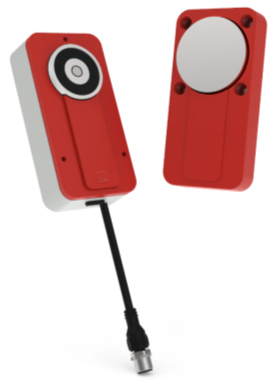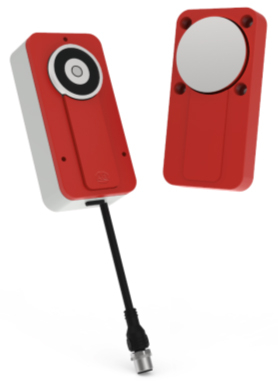When were your light curtains last tested?

Very common in today’s manufacturing and packaging facilities are light curtains, as they fall into the category of ESPE (Electro Sensitive Protective Equipment). They use AOPD (Active Opto-electronic Protection Devices) for safeguarding persons when interacting with machinery.
From an operator safety point of view, their primary function is to protect people from contact with moving hazardous parts of machinery. Along with physical guarding, light curtains and other ESPE are regarded as primary safety devices.
Suitable applications are many and varied from trip devices (such as manually loaded and unloaded hydraulic presses) to human presence sensing at the conveyor infeed and outfeed to hazardous machinery.
Light curtains can be specified with different resolutions i.e. the distance between successive beams. Typical resolutions of 300-400mm provide protection against full body access, 30mm provide protection against hand intrusion and 14mm for finger intrusion. Unfortunately, it is not always immediately obvious to determine what resolution light curtain has been fitted to the machine.
Less beams = less cost, although the variation in cost has significantly reduced in recent times. The vast majority of light curtains sold today are either 30mm or 14mm (hand or finger protection) resolution. It should be noted that there are still a significant number of light curtains in use on older industrial applications.
The selected resolution has an effect on the minimum safety distance allowed between the light curtain and the hazardous moving part(s) i.e. the higher the resolution, the smaller the safety distance required to the hazard.
EN ISO 13855:2010 – Safety of machinery – Positioning of safeguards with respect to the approach speeds of parts of the human body, provides information to make theoretical calculations for minimum safety distance requirements. This allows machinery designers or engineers to establish an approximate position for the light curtain in a given application.
In order to validate that the light curtain is positioned at an adequate distance from the nearest hazardous moving part, a suitable stop time performance test needs to be carried out. The test provides an accurate measurement of the overall stopping time of the machine from detection of the light curtain to the point of where the hazardous moving part(s) has come to a standstill condition.
Throughout industry, there are many existing installations where theoretical calculations or suitable testing has never been carried out. Others have had light curtain positions set using the theoretical calculations only. A relatively small number of applications are supported by testing and documented results when the machinery/installation was commissioned (new machinery).
The typical lifespan of machinery can be 10, 20 or 30+ years in service. Mechanical parts wear, machine speeds can be increased and energy sources (such as pneumatic supplies) can fluctuate or be adjusted throughout this time. These variations have an effect on the stopping time of the machine. What was an adequate safety distance when the machine was first installed may not be adequate today.
HSG 180 (free to download from HSE Books) provides guidance on the application of electro-sensitive protection equipment using light curtains and light beam devices to machinery. It provides the equation for calculating the theoretical safety distance required (as found in EN ISO 13855:2010).
There is also an ‘Inspection and test’ section in the guide that, in accordance with PUWER, there is a requirement to not only carry out an initial inspection and test of the ESPE, but also periodic inspection and test throughout the lifetime of the machinery. Frequencies are not specific, but the guide recommends that the maximum time between periodic inspection and tests is 6 months for type 4 ESPE and 12 months for type 2 ESPE, but this will depend on the equipment it is fitted to and the risk as a whole. If suitable arrangements are not in place and an incident occurs, there is a risk that the employer could face charges for breaching a number of PUWER regulations, in particular Regulation 6 and Regulation 11. Fines for breaches in health and safety law are now unlimited and factors such as the severity of the injuries sustained and the company’s ability to pay are considerations made by the criminal courts.
Downloads
Similar articles
More from Pilz Automation Technology
- Safe automation: Learning how to do it 27th November 2018
- Safe sensor technology - automate with all your senses 2nd November 2018
- When were your light curtains last tested? 7th June 2017
- Decentralised Periphery PDP20 meets PLe for series connected switches 18th September 2012












Write a comment
No comments